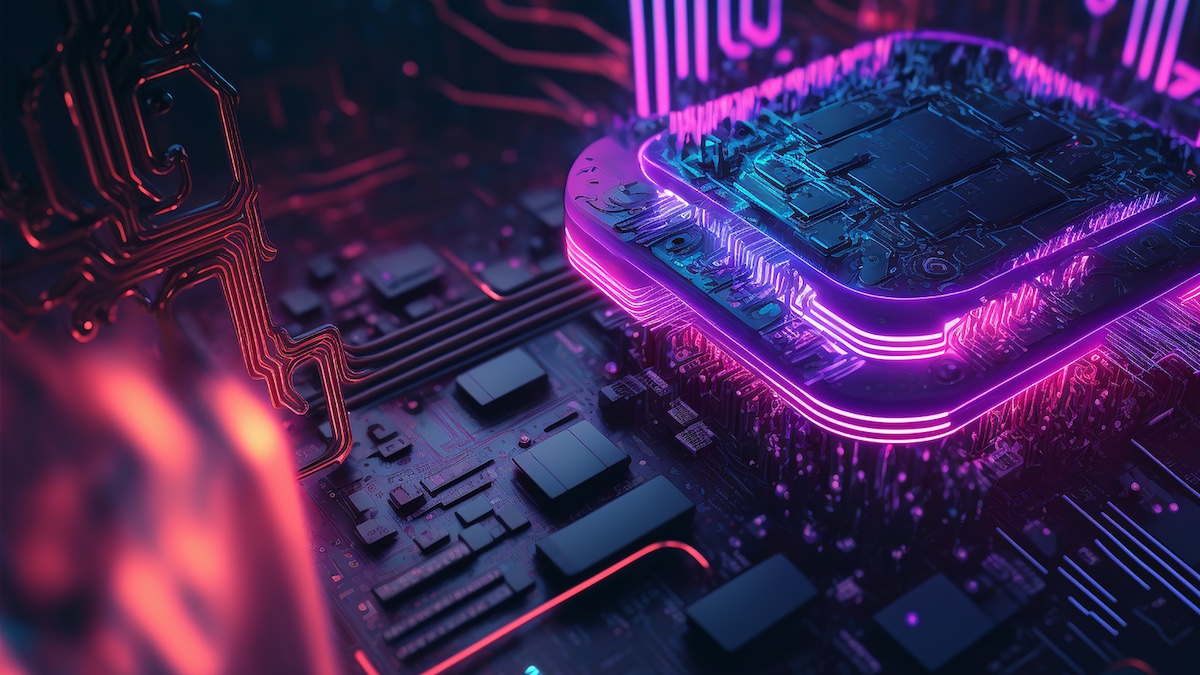10 big devops mistakes and how to avoid them

“One of the significant challenges with devops is ensuring seamless communication and collaboration between development and operations teams,” says Lawrence Guyot, president of IT services provider Empowerment through Technology & Education (ETTE). ... Ensuring the security of the software supply chain in a devops environment can be challenging. “The speed at which devops teams operate can sometimes overlook essential security checks,” Guyot says. “At ETTE, we addressed this by integrating automated security tools directly into our CI/CD pipeline, conducting real-time security assessments at every stage of development.” This integration not only helped the firm identify vulnerabilities early, but also ensured that security practices kept pace with rapid deployment cycles, Guyot says. ... “Aligning devops with business goals can be quite the hurdle,” says Remon Elsayea, president of TechTrone IT Services, an IT solutions provider for small and mid-sized businesses. “It often seems like the rapid pace of devops initiatives can outstrip the alignment with broader business objectives, leading to misaligned priorities,” Elsayea says.
Why We Need to Get a Handle on AI

A recent World Economic Forum report also found a widening cyber inequity, which
is accelerating the profound impact of emerging technologies. The path forward
therefore demands strategic thinking, concerted action, and a steadfast
commitment to cyber resilience. Again, this isn’t new. Organizations of all
sizes and maturity levels have often struggled to maintain the central tenets of
organizational cyber resilience. At the end of the day, it is much easier to use
technology to create malicious attacks than it is to use technology to detect
such a wide spectrum of potential attack vectors and vulnerabilities. The modern
attack surface is vast and can overwhelm an organization as they determine how
to secure it. With this increased complexity and proliferation of new devices
and attack vectors, people and organizations have become a bigger vulnerability
than ever before. It is often said that humans are the biggest risk when it
comes to security and deepfakes can more easily trick people into taking actions
that benefit the attackers. Therefore, what questions should security teams be
asking to protect their organization?
Demystifying cross-border data transfer compliance for Indian enterprises

The variability of these laws introduces complex compliance issues. As Indian
enterprises expand globally, the significance of robust data compliance
management escalates. Organizations like ours assist companies worldwide with
customized solutions tailored to the complexities of cross-border data transfer
compliance. We ensure that businesses not only meet international data
protection standards but also enhance their data governance practices through
our comprehensive suite of tools. The evolution of India’s data localization
policies could significantly influence global digital diplomacy. Moving from
strict data localization to permitting certain cross-border data flows aligns
India more closely with global digital trade norms, potentially enhancing its
relationships with major markets like the US and EU. India is proactively
revising its legal frameworks to better address the intricacies of cross-border
data transfers within the realm of data privacy, especially for businesses. The
forthcoming DPDPA regulations aim to balance the need for data protection with
the operational requirements of digital commerce and governance.
Digital ID adoption: Implementation and security concerns
Digital IDs are poised to revolutionize sectors that rely heavily on secure
and efficient identity verification. ... “As the Forrester experts note in the
study, the complexities and disparities of global implementation across
various landscapes highlight the strategic necessity of adopting a hybrid
approach to digital IDs. Moreover, there is no single, universally accepted
set of global standards for digital IDs that applies across all countries and
sectors. Therefore, the large number of companies at the stage of active
implementation demonstrates a growing need for frameworks and guidelines that
aim to foster interoperability, security, and privacy across different digital
ID systems,” said Ihar Kliashchou, CTO at Regula. “The good news is that
several international organizations and standards bodies — New Technology
Working Group in the International Civil Aviation Organization, the
International Organization for Standardization (ISO), etc. — are working
towards those standards. This seems to be a case in which slow and steady wins
the race,” concluded Kliashchou.
Forrester: Preparing for the era of the AI PC

AI PCs are now disrupting the cloud-only AI model to bring that processing to
local devices running any OS. But what is an AI PC exactly? Forrester defines
an AI PC as a PC embedded with an AI chip and algorithms specifically designed
to improve the experience of AI workloads across the computer processing unit
(CPU), graphics processing unit (GPU) and neural processing unit (NPU). ... An
AI PC also offers a way to improve the collaboration experience. Dedicated AI
chipsets will improve the performance of classic collaboration features, such
as background blur and noise, by sharing resources across CPUs, GPUs and NPUs.
On-device AI offers the ability to render a much finer distinction between the
subject and the blurred background. More importantly, the AI PC will also
enable new use cases, such as eye contact correction, portrait blur, auto
framing, lighting adjustment and digital avatars. Another benefit of AI
chipsets on PCs is that they provide the means to optimise device performance
and longevity. Previous AI use cases were feasible on PCs, but they drained
the battery quickly. The addition of an NPU will help preserve battery life
while employees run sustained AI workloads.
Gartner Reveals 5 Trends That Will Make Software Engineer

Herschmann said that while there is a worry that AI could eliminate coding
jobs instead of just enhancing them, that worry is somewhat unfounded. "If
anything, we believe there's going to be a need for more developers, which may
at first seem a little counterintuitive, but the reality is that we're still
in the early stages of all of this," he said. "While generative AI is quite
impressive in the beginning, if you dig a little bit deeper, you realize it's
shinier than it really is," Herschmann said. So instead of replacing
developers, AI will be more of a partner to them. ... Coding is just a small
part of a developer's role. There are a lot of other things they need to do,
such as keep the environment running, configuration work, and so on. So it
makes sense to have a platform engineering team to take some of this work off
developers' plates so they can focus on building the product, according to
Herschmann. "Along with that though comes a potential scaling effect because
you can then provide that same environment and the skills of that team to
others as you scale up," he said.
Beyond blockchain: Unlocking the potential of Directed Acyclic Graphs (DAGs)

DAGs are a type of data structure that uses a topological ordering, allowing
for multiple branches that converge but do not loop back on themselves.
Imagine a network of interconnected highways where each transaction can follow
its own distinct course, branching off and joining forces with other
transactions as required. This structure enables simultaneous transactions,
eliminating the need for sequential processing, which is a bottleneck in
traditional blockchain systems. ... One of the notable challenges of
traditional blockchain technology is its scalability. DAGs address this issue
by allowing more transactions to be processed in parallel, significantly
increasing throughput, a key advantage for real-time applications in commodity
trading and supply chain management. DAGs are more energy-efficient than
proof-of-work blockchains, as they do not require substantial computational
power for intensive mining activities, aligning with global and particularly
India’s increasing focus on sustainable technological solutions. But the
benefits of DAGs don’t stop here. Imagine a scenario where a shipment of
perishable goods is delayed due to unforeseen circumstances, such as adverse
weather conditions.
Pioneering the future of personalised experiences and data privacy in the digital age

Zero-party data (ZPD) is at the core of Affinidi's strategy and is crucial for
businesses navigating consumer interactions. ZPD refers to information
consumers willingly share with companies for specific benefits, such as
personalised offers and services. Consider an avid traveller who frequently
books trips online. He might share his travel preferences with a travel
company, such as favourite destinations, preferred accommodation types, and
activity interests. This data allows the company to tailor its offerings
precisely to his tastes. For instance, if he loves beach destinations and
luxury hotels, the company can send him personalised travel packages featuring
exclusive beach resorts with premium amenities. ... As data privacy
regulations tighten, businesses must prioritise consented and accurate data
sources, reducing legal risks and dependence on external data pools. Trust can
be viewed as a currency, altering customers' loyalty and buying decisions. A
survey by PWC showed that 33% of customers pay a premium to companies because
they trust them.
Shut the back door: Understanding prompt injection and minimizing risk

You don’t have to be an expert hacker to attempt to misuse an AI agent; you
can just try different prompts and see how the system responds. Some of the
simplest forms of prompt injection are when users attempt to convince the AI
to bypass content restrictions or ignore controls. This is called
“jailbreaking.” One of the most famous examples of this came back in 2016,
when Microsoft released a prototype Twitter bot that quickly “learned” how to
spew racist and sexist comments. More recently, Microsoft Bing (now “Microsoft
Co-Pilot) was successfully manipulated into giving away confidential data
about its construction. Other threats include data extraction, where users
seek to trick the AI into revealing confidential information. Imagine an AI
banking support agent that is convinced to give out sensitive customer
financial information, or an HR bot that shares employee salary data. And now
that AI is being asked to play an increasingly large role in customer service
and sales functions, another challenge is emerging. Users may be able to
persuade the AI to give out massive discounts or inappropriate
refunds.
Say goodbye to break-and-fix patches
A ‘break-and-fix’ mindset can be necessary in emergency situations, but it can
also make things worse. While it can be tempting to view maintenance work as
adding little value, failing to address these problems properly will only
create future issues as you accumulate tech debt. Fixing those issues will
require more resources — time, money, skills — that will undoubtedly hurt your
organization. ... Tech debt is one of those “invisible issues” hiding in IT
systems. Opting for quick fixes to solve immediate issues, rather than
undertaking comprehensive upgrades might seem cost-effective and
straightforward at first. However, over time, the accumulation of these
patches contributes significantly to tech debt. ... Despite the potential
consequences of inadequate and reactive maintenance, adopting a more proactive
approach can be challenging for many businesses. Economic pressures and
budgetary constraints are forcing leaders to reduce expenses and ‘do more with
less’ — this leads to situations where areas not traditionally viewed as
value-adding (like maintenance) are deprioritized. This is where managed
services can help.
Quote for the day:
''Smart leaders develop people who
develop others, don't waste your time on those who won't help themselves.''
-- John C Maxwell
No comments:
Post a Comment